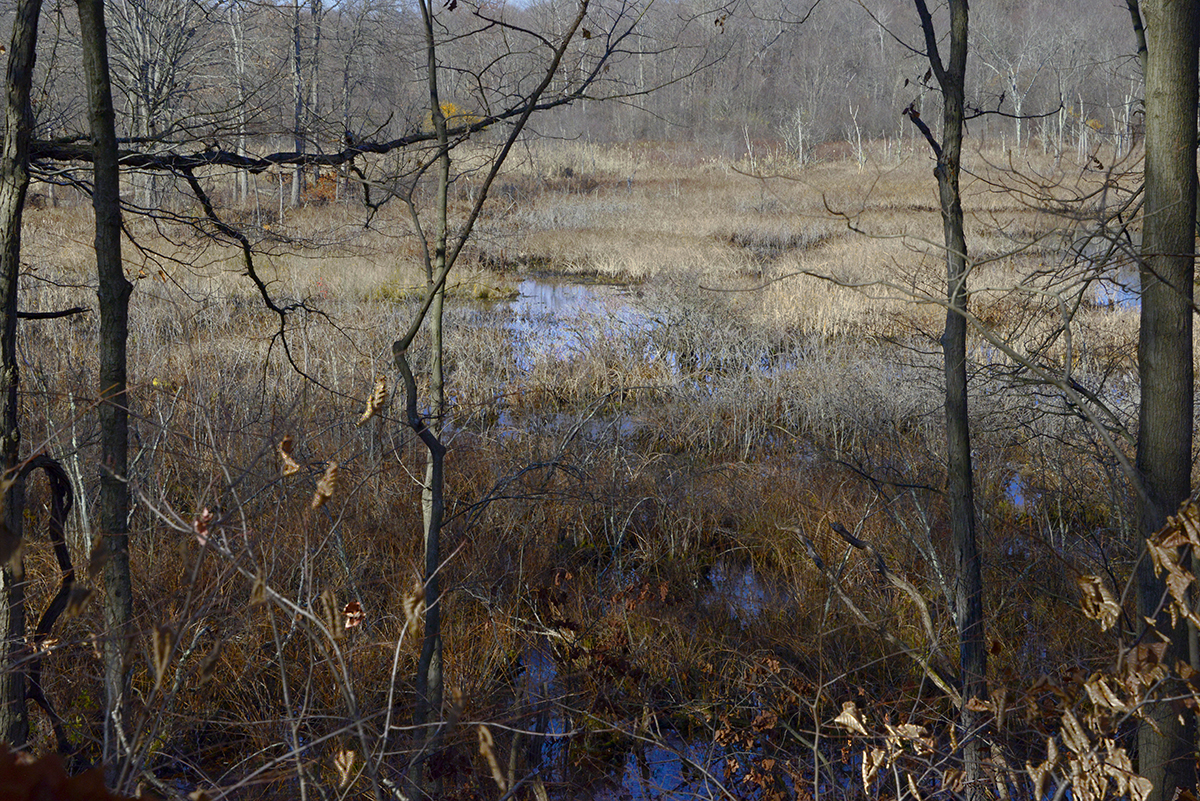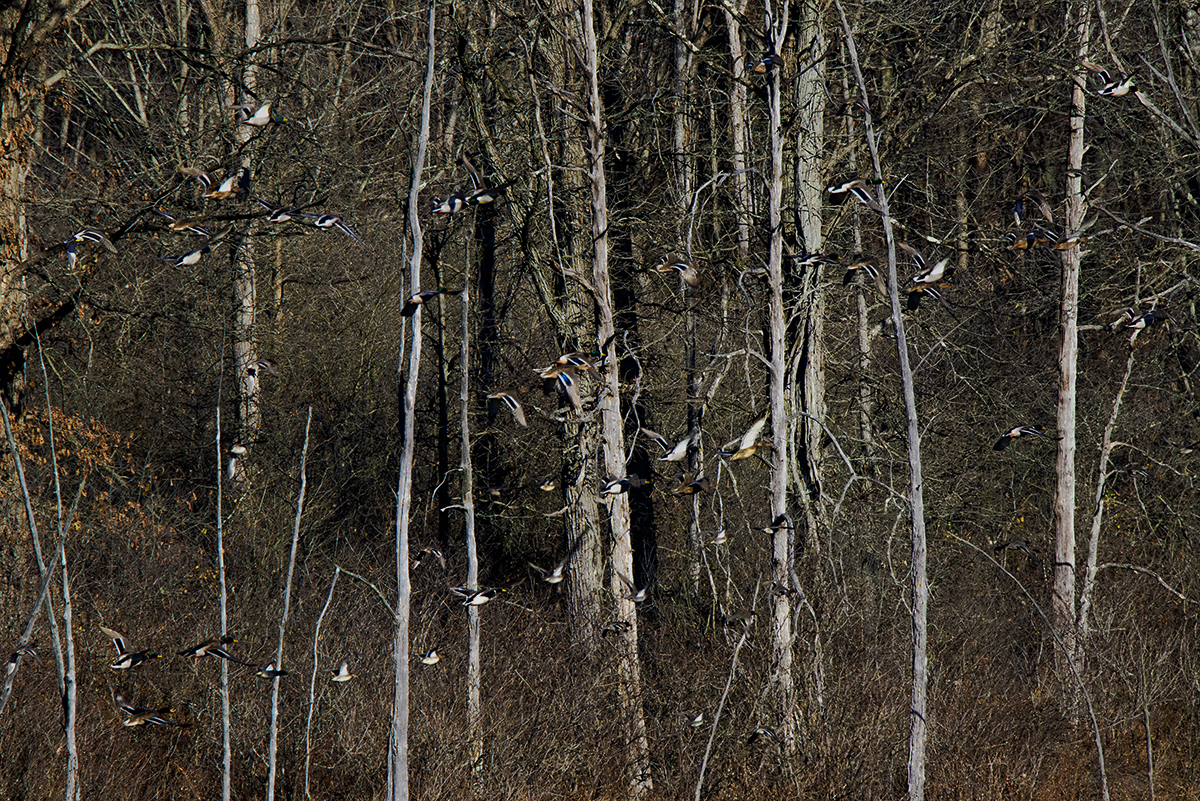 “The Sun is but a Morning Star” H.D. Thoreau
“The Sun is but a Morning Star” H.D. Thoreau
Image No. 1

Image No. 2
“DEATH OF A WETLAND”
Each day the sun rises with reverence over Schweitzer Marsh, lifting silently above the horizon, quivering briefly in the morning air, pushing into day its elongated shadows trapped in their own reflections, piercing still water. Before ascending into view, morning twilight stirs life through the marsh. The piping notes of bald eagles, the sudden silence before the primal croak of the great blue heron’s flight into morning, the kingfisher’s waking rattle and always, always, the rising chorus of redwing blackbirds. And yet beyond, geese and ducks, puddlers and divers sounding grace before the spreading sun.
Schweitzer Marsh, now in its death throes one year after the Wheeling & Lake Erie Railway excavated a channel and installed a new culvert in its west bank that has drained the marsh. Since February, I have worked with a variety of agencies and organizations whose missions are dedicated to preserving wetlands. Included among them, the Ohio Department of Natural Resources, Tinker’s Creek Watershed Partners, Ohio EPA, Summit County Metroparks and the U.S. Army Corps of Engineers (USACE).
Beginning in 2018, the Trump administration successfully dismantled and disemboweled the 1972 Clean Water Act as 100 environmental rules were officially reversed, revoked or otherwise rolled back during his administration. In May (2023), Supreme Court Justice Samuel Alito (Sackett vs. EPA) effectively provided the eviscerating blow to an estimated 40% of U.S. wetlands, writing in his majority opinion that the Clean Water Act applies only to wetlands that share contiguous surface waters. Corporations and individuals may now drain formerly protected wetlands, profiting from their sale as commercial and residential properties. This highly consequential decision has flown beneath the radar ever since despite the profound effect it portends for habitat, migrating species and sustained wildlife. And lost in the ruling is any consideration for the egregious and grave destruction of nature’s aesthetic.
My own work with the agencies and park systems has yielded little beyond sympathetic and generally sincere expressions of support. The political and bureaucratic morass encumbering action relates to the ambiguity of jurisdiction and lack of enforcement authority between agencies. However, after sifting through the maze throughout the past year, it appears the ultimate arbiter with both jurisdiction and enforcement authority is the U.S. Army Corps of Engineers. By last summer, the Chief of Regulatory Monitoring and Enforcement (Buffalo District, includes Ohio) for the Corps, was persuaded to review the facts with his team in Buffalo to make a determination as to the W&LE’s culpability and possible action against the railroad. 1,000 concerned citizens locally and nationally have already signed a petition to “Save Schweitzer Marsh,” many of whom have written letters to the railroad expressing concern and outrage demanding remediation. And many have donated money in furtherance of this cause. To that end, we have provided USACE as well as Ohio EPA a full accounting of the damage and its impact through an abundance of “before and after” images, videos, text and legal citations prohibiting the dredging and draining of the wetland by W&LE.
Pursuant to filing the requisite forms USACE requested, and providing pertinent and supporting resources, the Corps has yet to respond and/or acknowledge three separate requests for status updates since September 1. This is disheartening for so many of us who followed the rules and protocol (to the limited extent any of the agencies could provide direction or that we could infer a process) and come to question the efficacy of these agencies and organizations, most funded through taxes.
Abundant thanks to all who are determined to preserve this extraordinary natural resource. Perhaps in its demise we will take a small step forward by raising awareness ever so slightly among a public consumed by life’s quotidian demands.
This final rant but fading noise.








